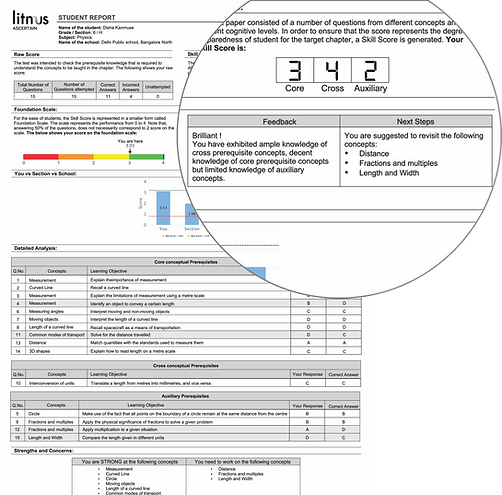
Litmus Suite


About Litmus
People are different!
Most teachers and parents have come across children of similar age who show widely differing skills and levels of understanding.
It is not unusual in a group of 7-year olds to find some already quite adept at reading and writing, while others struggle to express themselves, learn new words and read even the simplest of stories. This spread of performance often increases as students advance through school. Some 14-year olds can show real proficiency in solving mathematical problems using algebra, while others are not at all confident in applying the processes and formulae they have been taught. These differentials are no surprise to teachers who understand that we all learn and develop at different rates.
The challenge for parents and teachers is to have the understanding and resources to help students make progress from whichever stage they are at. Wisdom, from decades of research, tells us that the stages of child development and maturity (rather than just age) must be taken into account when determining students’ levels of academic achievement and rates of progress. A student’s lack of pre-requisite knowledge and any misconceptions they have gathered must be understood in detail if their next steps in learning are to be set appropriately.
This is where Litmus comes in!

The Litmus three-pronged suite
Litmus is a suite of easily administered tests designed to identify precisely the learning gaps for different students. It provides individual reports on students of all abilities so as to help teachers differentiate their learning plans. The test results and reports are produced for teachers by assessment and learning experts. Accurate analysis, succinctly reported, facilitates swift intervention in the classroom by teachers and help at home by parents.

Too often, the authors of textbooks assume students’ ‘possess’ or ‘lack’ particular prior knowledge and skills. This leads to presumptions that actually hinder many students’ learning. Therefore, before moving students forward to their next levels, it is important for the teacher to have an accurate understanding of different students’ strengths, gaps and misconceptions. Armed with the reports from Ascertain, teachers can address the precise content and instructional styles necessary to improve students’ progress. The reports help them to set up new learning situations more effectively. Through this ‘assessment for learning’, the wider assessments of students’ classroom performance made by teachers are enhanced.
Ascertain

Insight
As the name suggests, Insight provides opportunities for teachers to understand the students’ comprehension of new learning materials. The gap analysis enables teachers to identify the specific difficulties faced by different students and so, in discussion with students, devise targeted strategies, which may include alternative teaching or grouping approaches. This ‘assessment as learning’ leads to more ownership by the student of their learning priorities.
Excel
This is a cumulative assessment conducted after the learning module has been completed. It confirms the extent to which concepts and understanding are secure. The strength of Excel is that it checks the ‘parameters’ of learning (objectives, concepts, cognitive understanding and application) reliably against the Insight results. Importantly it uses a different investigative character and analytical approach. This provides ‘assessment of learning’ with validity and higher reliability than in school-based assessment processes.

